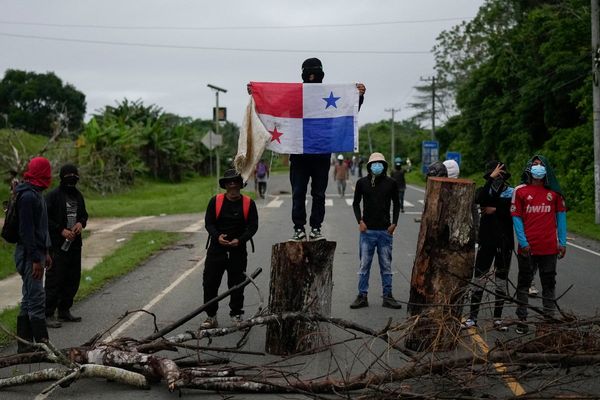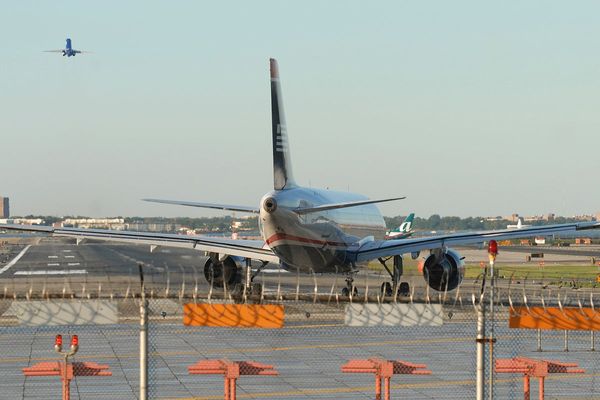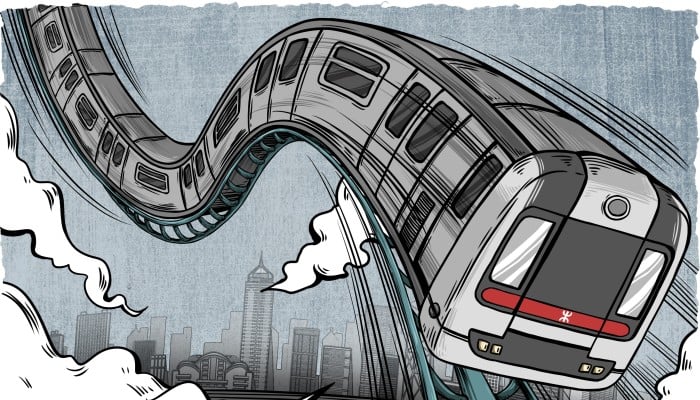
Images of smashed doors, twisted steel poles and shattered glass shocked Hong Kong last Monday, as commuters scrambled to make alternative plans when news broke of a train crash, the first ever on the city’s MTR system.
The only saving grace was the two vehicles crashed outside operating hours, at 3am during a trial run of a new HK$3.3 billion (US$420.4 million) signalling system meant for seven of the MTR Corporation’s lines. But the accident – which derailed one carriage and sent both drivers to hospital – caused a two-day breakdown in service on one line between Admiralty and Central, two major stations on Hong Kong Island.
It also sparked another bout of collective head-shaking as city residents wondered what had gone wrong with the once-revered paragon of Hong Kong efficiency and ingenuity.
Apologetic MTR bosses blamed a mysterious software fault for the signalling system failure, and suspended the trials pending further investigations.
Chief Executive Carrie Lam Cheng Yuet-ngor warned of tougher action if the transport behemoth did not reflect on its performance. “If it requires the government’s intervention to instil change, I am more than willing to do so,” she said.
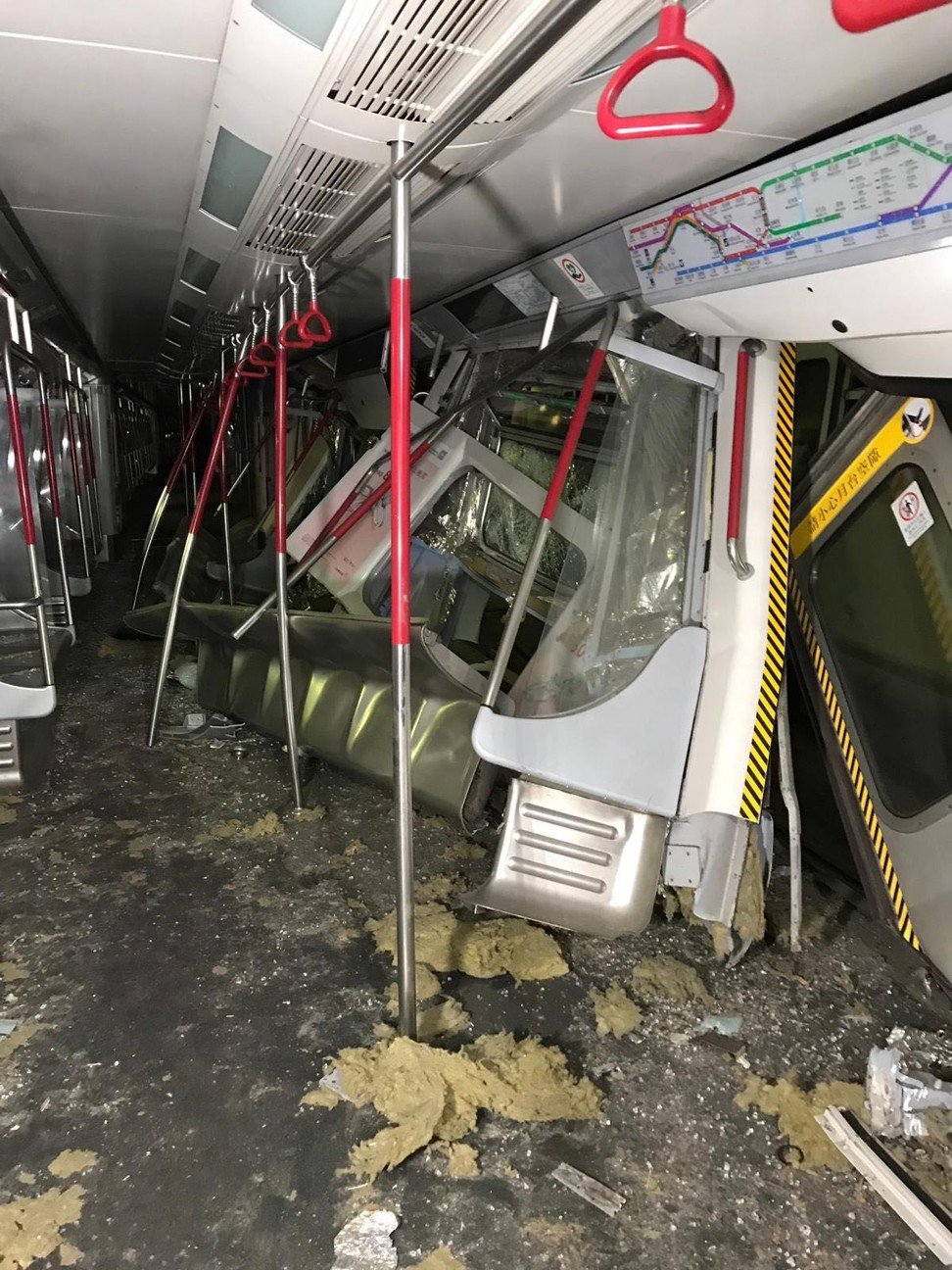
The Hong Kong leader has every reason to be firm with the MTR Corp, the city’s sole rail operator, which has been in the headlines for all the wrong reasons over the past year, sparking questions over its governance.
Despite achieving a near-impeccable punctuality rate of 99.9 per cent for a metro system that serves 5 million passengers every day – and net profit of HK$10 billion in each of the past five financial years – the rail firm has been hit hard by a series of management crises and safety scandals.
Even insiders agreed that 2018 had been MTR’s annus horribilis, bringing a barrage of woes from allegations of a cover-up involving shoddy construction and missing documents on the HK$97.1 billion Sha Tin-Central rail link, to an unprecedented simultaneous breakdown of four MTR lines in October.
But 2019 could well be another bad one, going by the events of the past week. On Sunday, as it picked up the pieces from the crash, the MTR suffered a temporary suspension of express services to the airport after a mechanical fault disrupted a train’s power supply.
Rex Auyeung Pak-kuen and Jacob Kam Chak-pui will soon take over as non-executive chairman and CEO respectively. Reforming internal systems and restoring public confidence will be key issues facing not just the new management and board, but also the government.
Looking at the messes of the past months, several critics have blamed the partial privatisation of the MTR Corp in 2000 and its subsequent merger with the government-owned KCR Corporation in 2007 for its problems. The rail giant is about 75 per cent owned by the Hong Kong government.

A lack of competition
Timothy Hau Doe-kwong, principal lecturer with the University of Hong Kong’s faculty of business and economics and an expert in transport policy, said both of those corporate moves squelched the network’s competition and pushed the operator into complacency.
He said the MTR Corp became effectively a monopoly with the merger. “It has been a monopoly and the MTR is kind of getting used to it,” he said.
“The signalling system accident fortunately did not injure many, but it is a wake-up call.”
Hau pointed out the MTR Corp’s listing on the stock exchange resulted in the government putting on two hats, being both the company’s regulator and its majority owner.
“The best way is to make the MTR Corp a pure public company again – through buying out the remaining shares on the market – so the government can ask the company to do whatever it pleases,” he said.
The best way is to make the MTR Corp a pure public company again – Timothy Hau, HKU lecturer
Quentin Cheng Hin-kei, spokesman for the commuter concern group Public Transport Research Team, agreed. He said the MTR Corp had become “a corporate monster too big to fail”.
He attributed the lack of competition to the government’s preference for railways and its lax supervision.
“The core of the problem lies with the government’s overreliance on railways at the expense of other modes of public transport. It keeps expanding railway networks to make them the backbone of Hong Kong’s public transport system, while reining in other public transport services such as buses and minibuses,” he said.
At present, rail accounts for more than 42 per cent of public transport journeys, compared with 33 per cent from franchised buses and the rest from minibuses and taxis.
Cheng pointed out that whenever new MTR stations open, the government reduces nearby bus or minibus routes to prevent competition.
“This unbalanced distribution of public transport services has pushed Hong Kong’s commuters to overly rely on railways. This creates a situation where whenever there is a rail service failure there will be commuter turmoil as passengers don’t know where to turn,” he said.
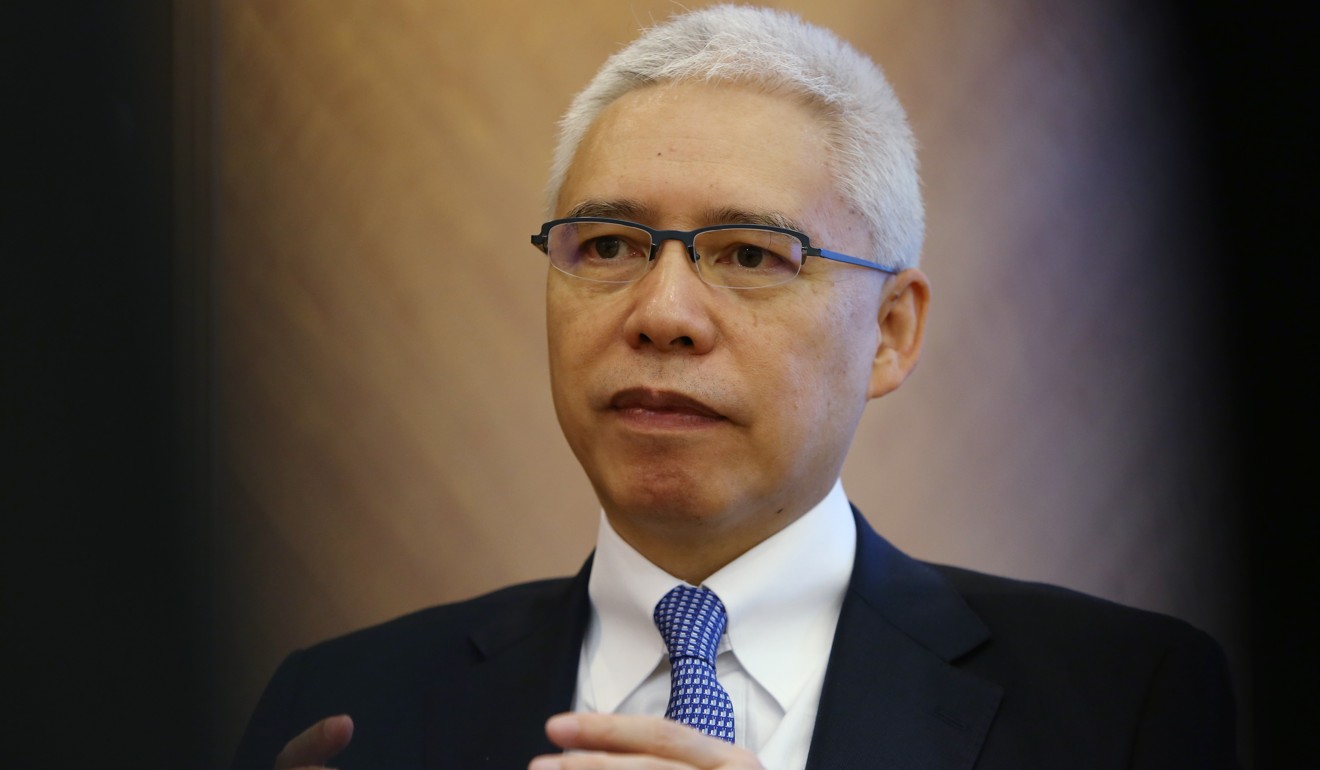
Problems with a semi-privatised model
Former KCRC chairman Michael Tien Puk-sun said the semi-privatised model made it hard for the government to take direct control of MTR affairs.
The biggest problem with the model is that it allows the MTR Corp a pretty free hand to run its operations – Michael Tien, former KCRC chairman
“The biggest problem with the model is that it allows the MTR Corp a pretty free hand to run its operations. Even though some government officials sit on its board, it won’t let them interfere too much with its internal affairs,” Tien, now a pro-government legislator, said.
“The officials’ role on the board is mainly advisory. This was my experience with the KCRC board when I was chairman.”
However, Tien still believed in the merger, saying that if it had not happened there would be a vicious rivalry between MTR and KCR services, which would have undermined the development of railways in Hong Kong.
“To this day I still think the merger was the right decision. This enables better network connections and more interchange fare concessions,” he said.
Tien agreed the best way forward was for the government to repurchase all MTR Corp shares to strengthen the city’s oversight of railway projects, an idea he proposed to Lam last August.
Engineer Albert Lai Kwong-tak, founding chairman of think tank Professional Commons, said semi-privatisations had proven problematic elsewhere, notably in Singapore.
“The partially privatised structure of the MTR Corp is weird, which is the root of many problems we have seen and is fatal to the company,” he said. “While it has to accomplish political and social missions, it has to be accountable to minority shareholders. There are too many conflicting goals.”
In Singapore, after a spate of multiple breakdowns, the country’s sovereign investment fund Temasek Holdings bought rail operator MRT for S$2.57 billion (US$1.9 billion) in 2016 and delisted it, allowing it to focus on operational reliability and not on market expectations and asset investments.
Is a buy-back viable?
Ngai Hok-yan, a veteran structural and geotechnical engineer, said the first step to overhauling the MTR Corp was a government buy-back. The shares in public hands are valued at about HK$71 billion, based on about 1.5 billion shares in the market and the last traded price of HK$47.30 on Friday.
“It should not have gone public in the first place due to the nature of a social utility,” Ngai said. “Whose interests come first – passengers’, minority shareholders’ or the government’s, as it is the biggest shareholder?”
Whose interests come first – passengers’, minority shareholders’ or the government’s, as it is the biggest shareholder? – Ngai Hok-yan, veteran engineer
A case in point was rail fares. Last year, the corporation was allowed to raise fares by 3.14 per cent based on a price-setting mechanism, but it offered sweeteners to passengers such as a 3 per cent rebate for commuters for at least six months last year, costing HK$220 million.
David Webb, a corporate governance activist and a former investment banker, agreed that the government should have a clear role in the MTR Corp.
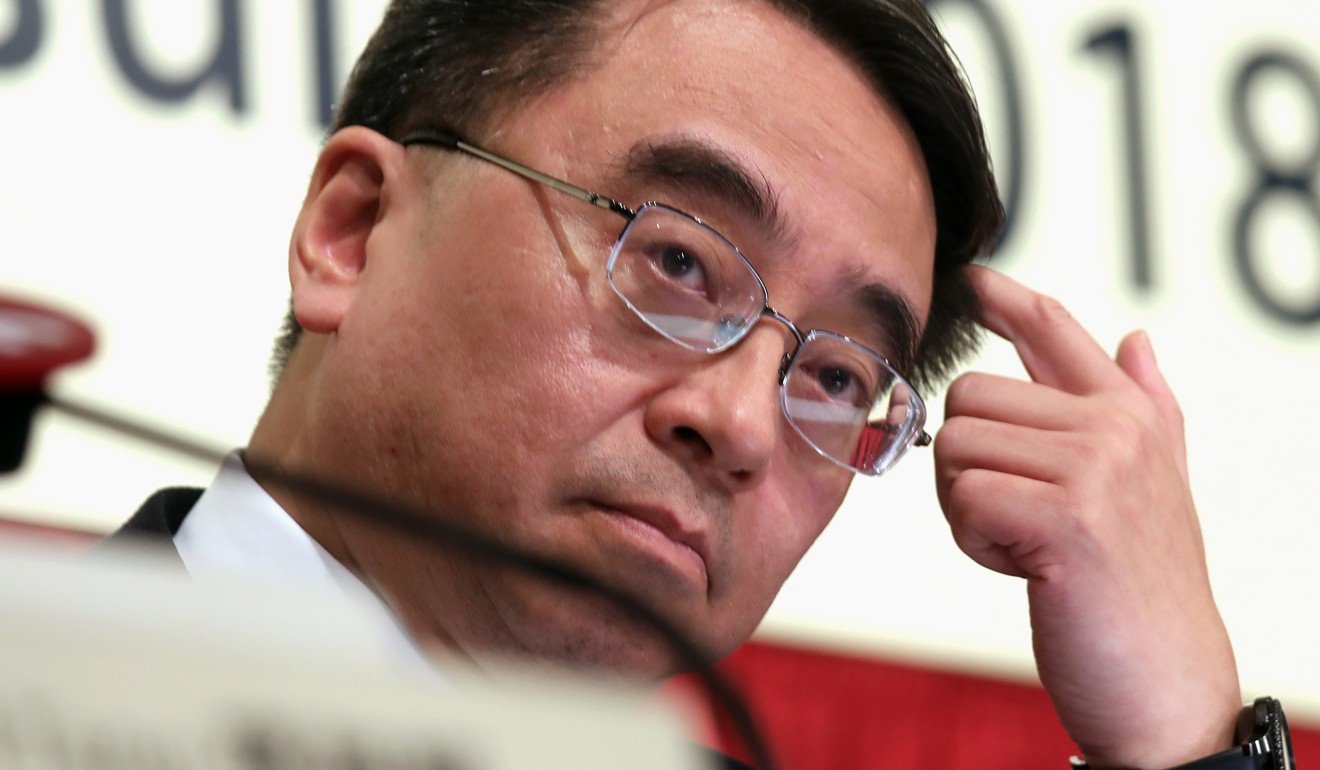
“It is a regulator and an owner,” he said. “The government either sells its entire stake to investors or buys out the 25 per cent in the market. Either option is better than the current situation.”
The board of directors are non-executive, except for the CEO, and largely hand-picked by the government due to its majority ownership, he said.
“Why doesn’t the government allow institutional investors who hold shares in the corporation to nominate some non-executive directors to the board?” he said.
Rail consultant Chang Che-son, CEO of Pypun-KD & Associates, offered an alternative way of creating competition in the railway market. He said the government could consider inviting other operators into the city.
“What’s done is done. It’s hard to change the existing monopoly for MTR,” he said. “But for future rail lines, the government could open up the market by tendering new rail projects. It might attract other competent players.”
Overreach and lack of proper planning
Another issue with the MTR Corp, critics say, is its highly ambitious plans – if not overreach – in wanting to expand its operations locally and overseas, and the lack of a long-term vision for railway development in Hong Kong.
Within just the past decade, the rail company has taken on several projects at once, such as the Kwun Tong line extension, the Island line’s western extension, the South Island line, the Sha Tin-Central link and the cross-border high-speed rail link.
“All these projects were under construction within the same period. How could it cope with so many projects and at the same time be able to find sufficient talent and skilled manpower?” Tien asked. “The MTR Corp is simply overloaded.”
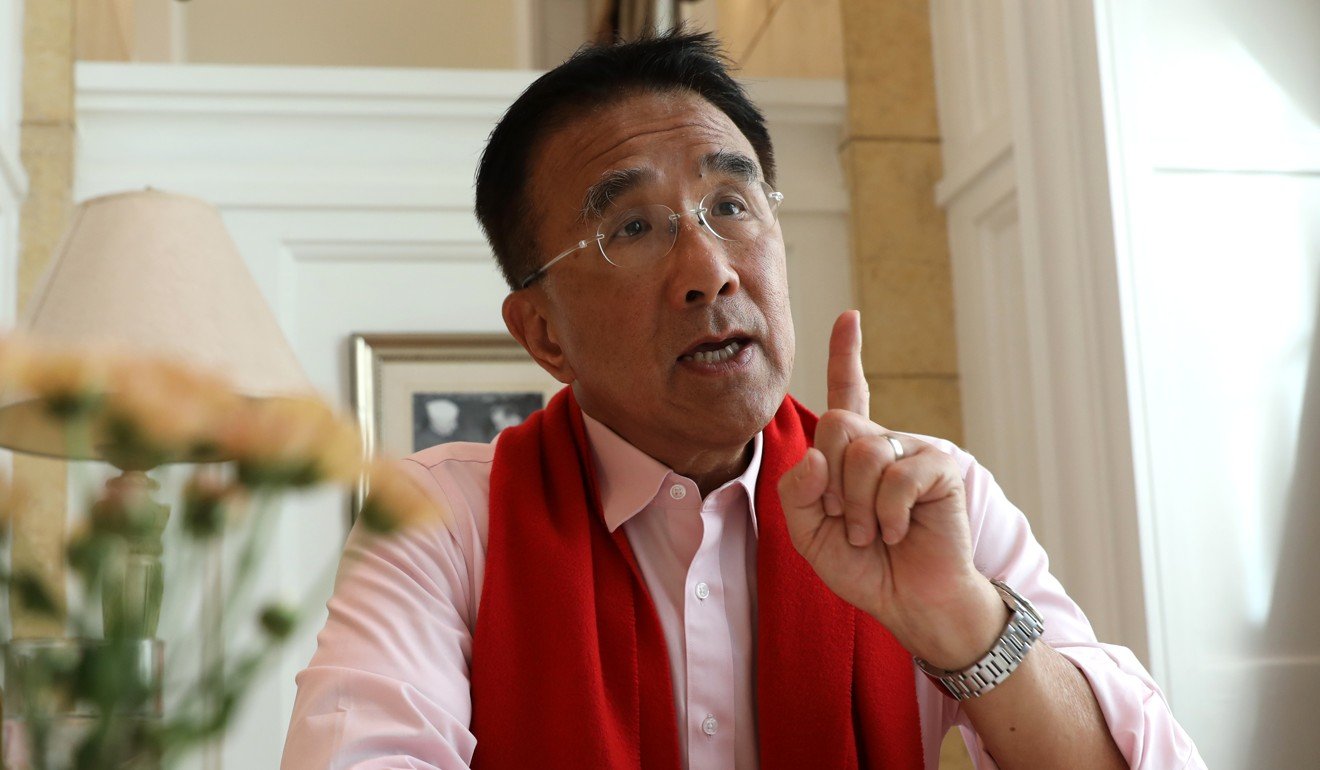
He said delays and cost overruns were bound to crop up when the rail operator had bitten off more than it could chew.
Tien attributed the dilemma to the lack of sustainable rail planning in the city.
“This is the problem with Hong Kong,” he said. “Sometimes there is not a single project for a long period of time. But all of a sudden the government will require you to deliver a number of projects at the same time. In the past, you would see just one rail project being carried out every 10 years.”
Chang agreed, saying the overreach pointed to a lack of government oversight on long-term rail planning.
“If you take on so many projects at the same time and they are all very complex, you need to allocate sufficient time and competent manpower for each project. This is not easy,” he said.
“The rush may cause you to compromise on quality and to easily overlook many things,” he added.
Reforms overdue?
Some critics argued the best way to strengthen the government supervision of railway projects was to split the current Transport and Housing Bureau in two and set up a department under the bureau to oversee all railway affairs, from design to operations.
Both Tien and Civic Party lawmaker Jeremy Tam Man-ho were among advocates of the overhaul.
“The problem with the Transport and Housing Bureau is that the transport minister, past or present, doesn’t have a transport background or expertise for spotting the problems of railway projects,” Tam said.

“Actually railway development concerns a different area from other modes of public transport such as buses or ferries. If we can have a railway department to deal with all railway matters, it will ensure safe construction of rail projects and better railway service.”
Railway development concerns a different area from other modes of public transport such as buses or ferries – Jeremy Tam, lawmaker
With Kam, currently the managing director, taking over as CEO from April 1, Hong Kong Federation of Railway Trade Unions vice-chairman Tam Kin-chiu expressed hope that the new management would enhance its communication with the unions and actively seek their views and on-the-ground expertise.
“In the past, the management would meet union representatives once every three months. It was just like a routine thing for them without meaningful discussions of the concerns of employees. I hope this time the new leaders will take our views seriously and overhaul their complacent mentality,” he said.
Whether it is complacency, overreach, or about corporate structure and governance, the new drivers in the MTR hot seat will have their work cut out.
For now, the avoidance of serious mishaps and commuter safety takes top priority.

